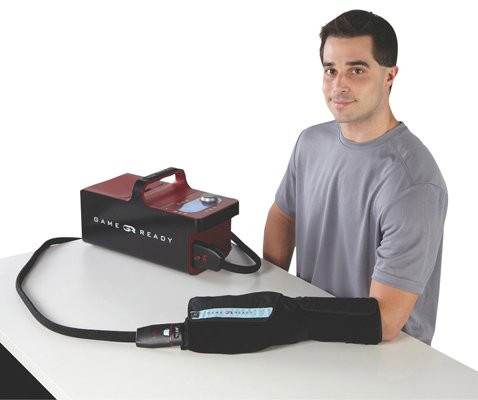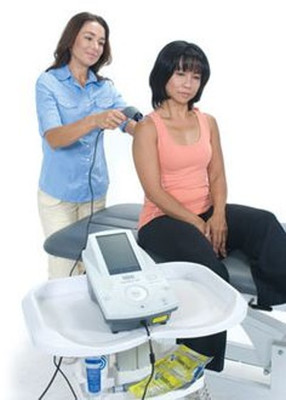 27th Jan 2017
27th Jan 2017
The Modalities of Sports Therapy
Sports clinics and sports therapy focus on improving functional movement, reducing symptoms associated with sports injuries and lowering the risk of recurrent injuries. What sets sports therapy apart from typical rehabilitation is the focus on occupational and sports specific fitness, regardless of age and ability. Sports therapists look to:
- Understand sports and exercise principals and create programs designed to optimize athletic performance and prevent injuries
- Treat acute injuries sustained during recreational, training & competitive athletic environments
- Assess, treat and provide intervention where appropriate
- Create and implement rehabilitative programs designed to return to full function

Balance Training Helps Simulate Movements Common in Sports
There are common sports injuries that all sports clinics are trained to treat. These injuries include:
- Ankle sprain
- Groin pull
- Hamstring strain
- Shin splints
- Knee injury: ACL tear
- Knee injury: Patellofemoral syndrome
- Tennis elbow (epicondylitis)
- Bursitis
- Fractures
- Concussions
Creating a rehabilitative program in sports therapy is similar to physical therapy protocols for typical populations. The main goal is returning to full function, which in the case of athletes, includes full-performance based goals in their specific athletic activity or sport. In order to return to full function after a sports injury, a sports therapist has to create a program that can help:
- Reduce pain
- Limit swelling
- Improve range of motion
- Muscle strengthening
- Core stability training
- Proprioception training
In order to meet these goals efficiently, sports therapists utilize a lot of the modalities found in physical therapy.
List of Most Common Physical Therapy Modalities Used to Treat Sports Injuries

Ultrasound Therapy: Ultrasound therapy has been found to be beneficial in reducing pain and swelling, while facilitating tendon-bone healing in post-ACL reconstruction patients. More than 70% of ACL injuries occur with agility sports (basketball, soccer, skiing, football) and is one of the most common injury treated in sports therapy. (Source)
Related Article: How Physical Therapy Increases Function Post ACL Surgery
Low-Level Laser Therapy: An abstract published in Laser Therapy found that low-level laser therapy was beneficial in reducing pain in some common sports injuries including: tennis elbow, Achilles tendinitis, and jumper’s knee.
LLLT is also powerful to use with other therapeutic modality like ultrasound therapy. Another study published in Photomedicine and Laser Surgery studied the use of LLLT and low-level pulsed ultrasound as it affects bone repair. The study found that the early intervention of both LLLT and therapeutic ultrasound used together was beneficial in accelerating to process of new bone formation following a fracture.

Transcutaneous Electrical Nerve Stimulation (TENS): Tendon injuries are a common sports injury and is usually a result of tears that accumulate over time. Tendon injuries cause a loss of movement, pain and weakness. TENS works by delivering electrical impulses that help stimulate the release of endorphins, the body’s own natural painkillers. TENS units also come in portable devices that can be used by athletes at home as an alternative to oral-pain medication.
Therapeutic Ultrasound/TENS Combination Therapy: TENS is also powerful in combination with therapeutic ultrasound in treating sports injuries. A study published in the Brazilian Journal of Physical therapy found that ultrasound therapy and TENS can be used simultaneously after an Achilles tendon rupture to help reduce pain and swelling while helping initiate tendon repair.
Whirlpool Therapy: Whirlpool therapy is popular in sports therapy because it’s great to use to reduce pain and swelling following an injury, but is also useful to help with injury prevention. With the ability to offer heat and cold therapy in addition to contrast therapy, therapeutic whirlpools can be used with most sports injuries, from sprains to tendonitis issues.
Therapeutic Exercise: Sports therapists utilize therapeutic exercise in order to improve strength, core stability, posture and proprioceptive training. Some of the tools a sports therapist will use for therapeutic exercise are:
- Therapy bands
- Underwater treadmills
- Continuous passive motion machines
- Balance trainers and boards
Paraffin Therapy: The most common wrist and hand injuries in sports are wrist sprains and fractures (broken wrist or broken finger). For predominately lower-leg sports (like soccer) it is possible to still participate in training and events while healing from a hand or wrist injury. However, for any athlete who suffers from a hand or wrist injury, pain, swelling and limited movement are all common complaints. Paraffin therapy baths soothes chronic joint pain, relaxes stiff muscles, and improves blood flow to treatment areas making it a great choice when treating hand and wrist injuries because it helps immediately reduce pain while improving hand movement.

Cold Compression Therapy: Bursitis, or bursa inflammation, is another common sports injury that causes pain, stiffness and inflammation to joints like elbows, knees, shoulders and hips. Cold compression therapy devices are perfect for treating bursitis because they have wraps for specific parts of the body. Cold and compression provide both an analgesic and edema reducing effect, which helps reduce symptoms of Bursitis in a short amount of treatment time. Cold compression devices are also available for patient’s home use and can help dramatically reduce acute pain in a short amount of time.
LED Light Therapy: LED light therapy is a non-invasive therapeutic device which helps reduce pain, improve soft tissue repair and boosts circulation to treatment area. This makes LED light therapy a great choice when treating acute pain injuries like sprains, strains and tendon ruptures.
Manual Therapy: From soft tissue and joint mobilizations to traction, manual therapy is an important part of treating sports injuries, particularly those that are deep tissue injuries like piriformis syndrome or impinged nerves. For example, traction tables are beneficial in treating nerve impingement issues that can lead to pain, loss of movement and weakness.
Sports therapy is a specialized form of physical therapy. The treatment modalities are the same from those used in typical rehabilitation. Where sports therapy diverges is the bar for what constitutes function for athletes is based on not only daily activities, but performance in their chosen sport. This added component makes it necessary for sports therapists to have access to all the innovative modalities that have been proven to reduce symptoms and improve recovery outcomes for athletes of all levels.
Related Article: Treating the Top 10 Sports & Recreation Injuries





